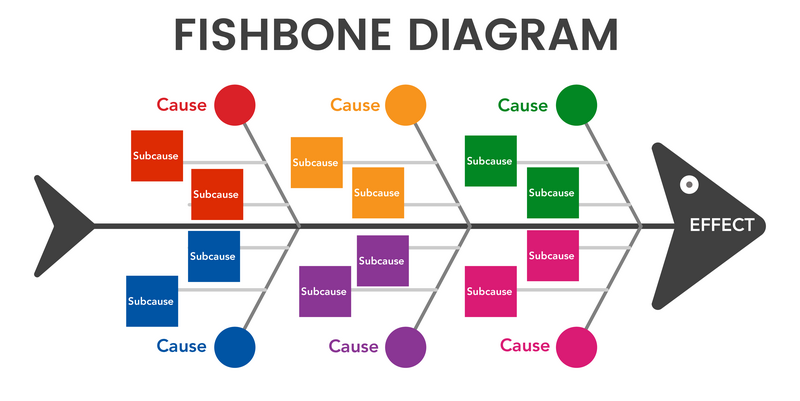Fishbone

Fishbone (Let’s Talk Science)

Fishbone (Let’s Talk Science)
How does this align with my curriculum?
This learning strategy helps students analyze the underlying cause and effect of problems.
Why use it?
- To analyze the root causes of issues
- To support critical thinking skills
Tips for success
If students have difficulty brainstorming the major categories of causes of the problem, offer generic headings such as:
- Methods
- Machines (equipment)
- People (manpower)
- Materials
- Measurement
- Environment
How do I use it?
- Identify a problem statement (effect) that the group would like to tackle.
- This can be a whole class or a small group.
- Brainstorm the major categories of causes of the problem.
- These categories are the branches off of the main arrow
- Asking “Why does this happen?” may help to identify those causes
- Finally, brainstorm all of the possible sub-causes on sticky notes related to those initial causes. By continually asking “why” might this happen, it allows for further causes to be unveiled.
- Once all causes have been identified, these causes can be used during an Inquiry process, a design thinking process, or a design and build process to start thinking about solutions.
Image - Text Version
Shown is a colour diagram of a mind map shaped like a fish, with the head labelled “effect” and causes branching off from along the spine. The title, “Fishbone Diagram” is across the top of the diagram in block letters. The head of the fish is on the right. A long black line represents its spine, which leads to a tail on the left. Six diagonal grey lines branch off from the spine, representing smaller bones. At the end of each small bone is a different coloured circle labelled “Cause.” Two even smaller, lighter grey, horizontal lines branch off from each smaller bone. At the end of each of these is a square in the same colour as the circle on the larger bone. Each square is labelled “Subcause.”
Variations
- When working on the Fishbone, you may find that there could be several related problems that need to be addressed. Give each problem its own diagram; do not attempt to answer them all using one diagram.
Extensions
- Once you have completed the fishbone diagram, this can be the jumping off point for starting a project, engaging in a design thinking process, etc.
References
Adapted from ASQ (n.d.). Fishbone Diagram.
